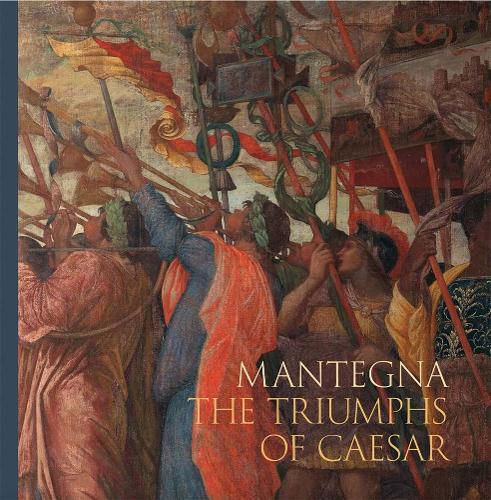Readings Newsletter
Become a Readings Member to make your shopping experience even easier.
Sign in or sign up for free!
You’re not far away from qualifying for FREE standard shipping within Australia
You’ve qualified for FREE standard shipping within Australia
The cart is loading…






Andrea Mantegna painted The Triumphs of Caesar between the mid-1480s and 1506. The series of nine canvases reconstructs the magnificent procession held in 46 bc celebrating the victories of the Roman general - and later dictator - Julius Caesar.
This introduction to the series begins by exploring Andrea Mantegna's career and artistic production in Mantua between 1460 and 1506. During this period, his output included altarpieces and frescoes, as well as portraits and paintings of pagan and devotional subjects. Obsessive in his attention to detail and expert in illusionistic representations of space, Mantegna transformed Mantua into a 'modern' avant-garde centre whose influence spread all over Italy and beyond.
A second chapter focuses specifically on the Triumphs. Mantegna took on this highly ambitious project when he was working as a court painter for the ruling Gonzaga family in Mantua. He drew on ancient and contemporary writings for this powerful and sustained evocation of the classical world, incorporating imagery from Roman antiquities.
$9.00 standard shipping within Australia
FREE standard shipping within Australia for orders over $100.00
Express & International shipping calculated at checkout
Andrea Mantegna painted The Triumphs of Caesar between the mid-1480s and 1506. The series of nine canvases reconstructs the magnificent procession held in 46 bc celebrating the victories of the Roman general - and later dictator - Julius Caesar.
This introduction to the series begins by exploring Andrea Mantegna's career and artistic production in Mantua between 1460 and 1506. During this period, his output included altarpieces and frescoes, as well as portraits and paintings of pagan and devotional subjects. Obsessive in his attention to detail and expert in illusionistic representations of space, Mantegna transformed Mantua into a 'modern' avant-garde centre whose influence spread all over Italy and beyond.
A second chapter focuses specifically on the Triumphs. Mantegna took on this highly ambitious project when he was working as a court painter for the ruling Gonzaga family in Mantua. He drew on ancient and contemporary writings for this powerful and sustained evocation of the classical world, incorporating imagery from Roman antiquities.